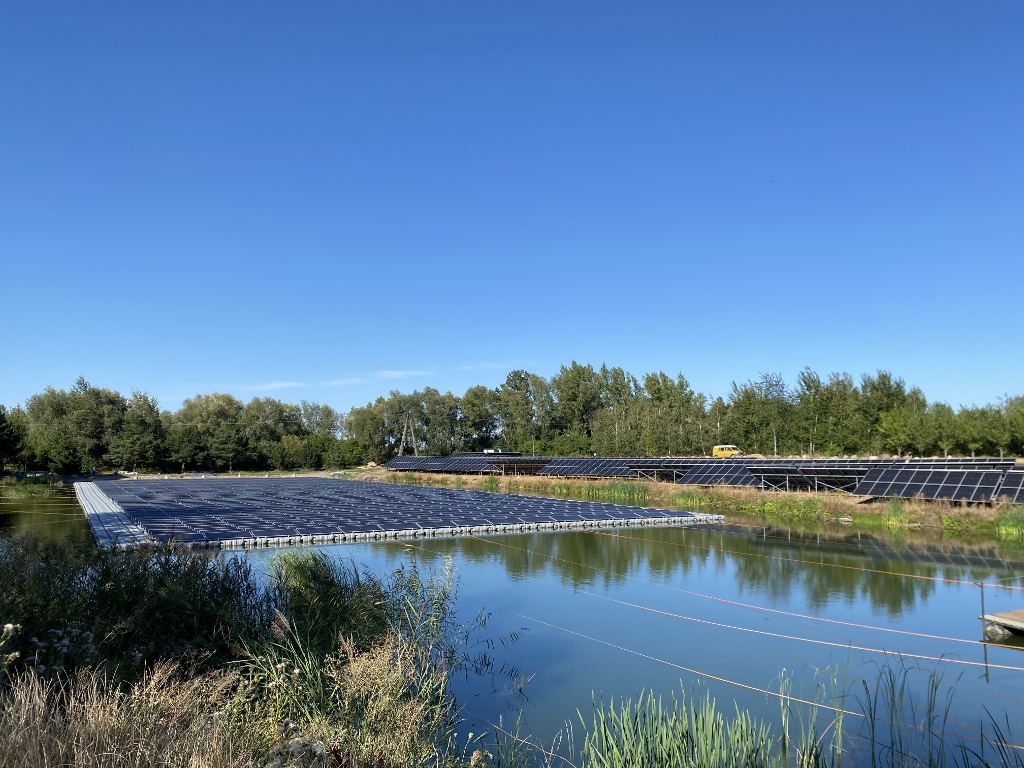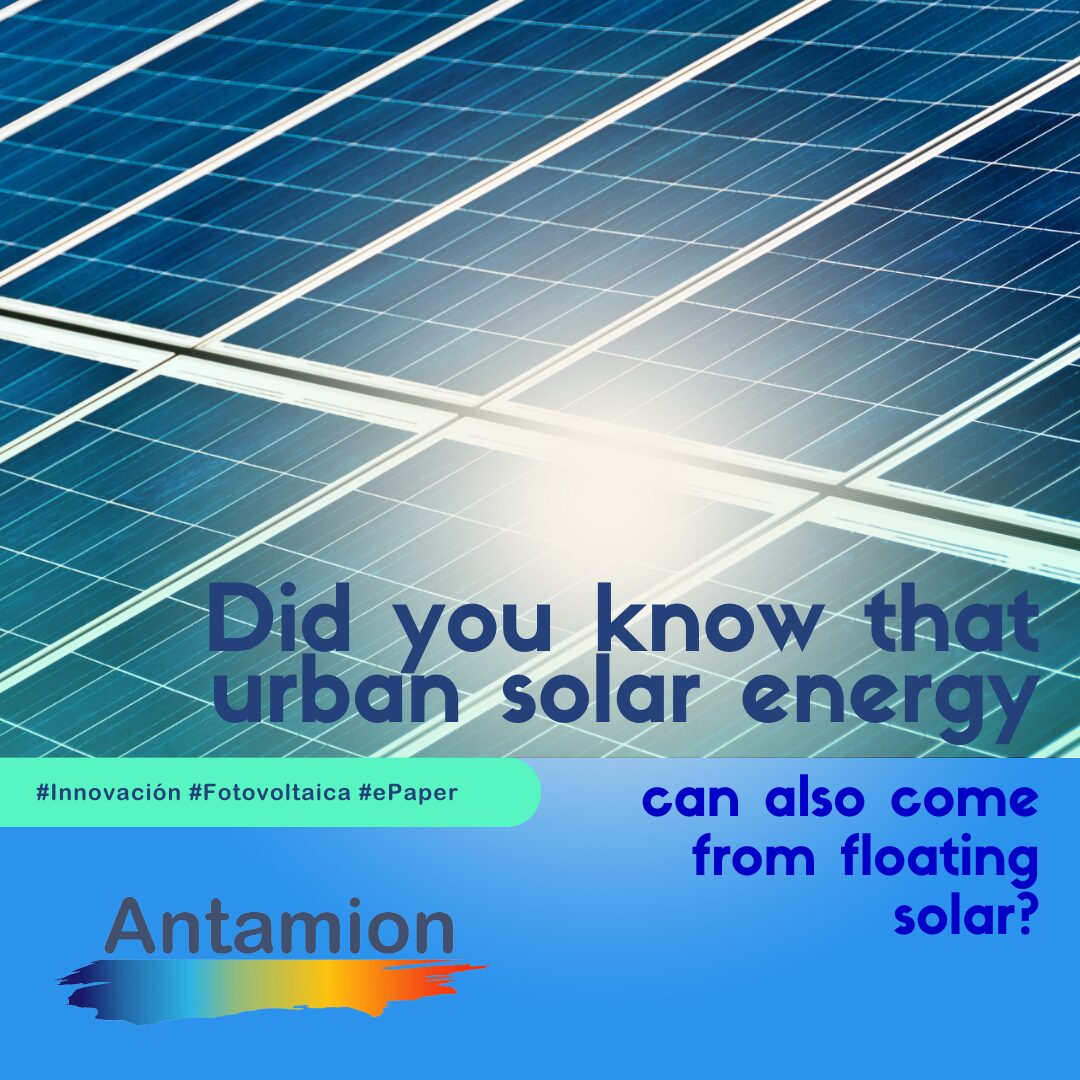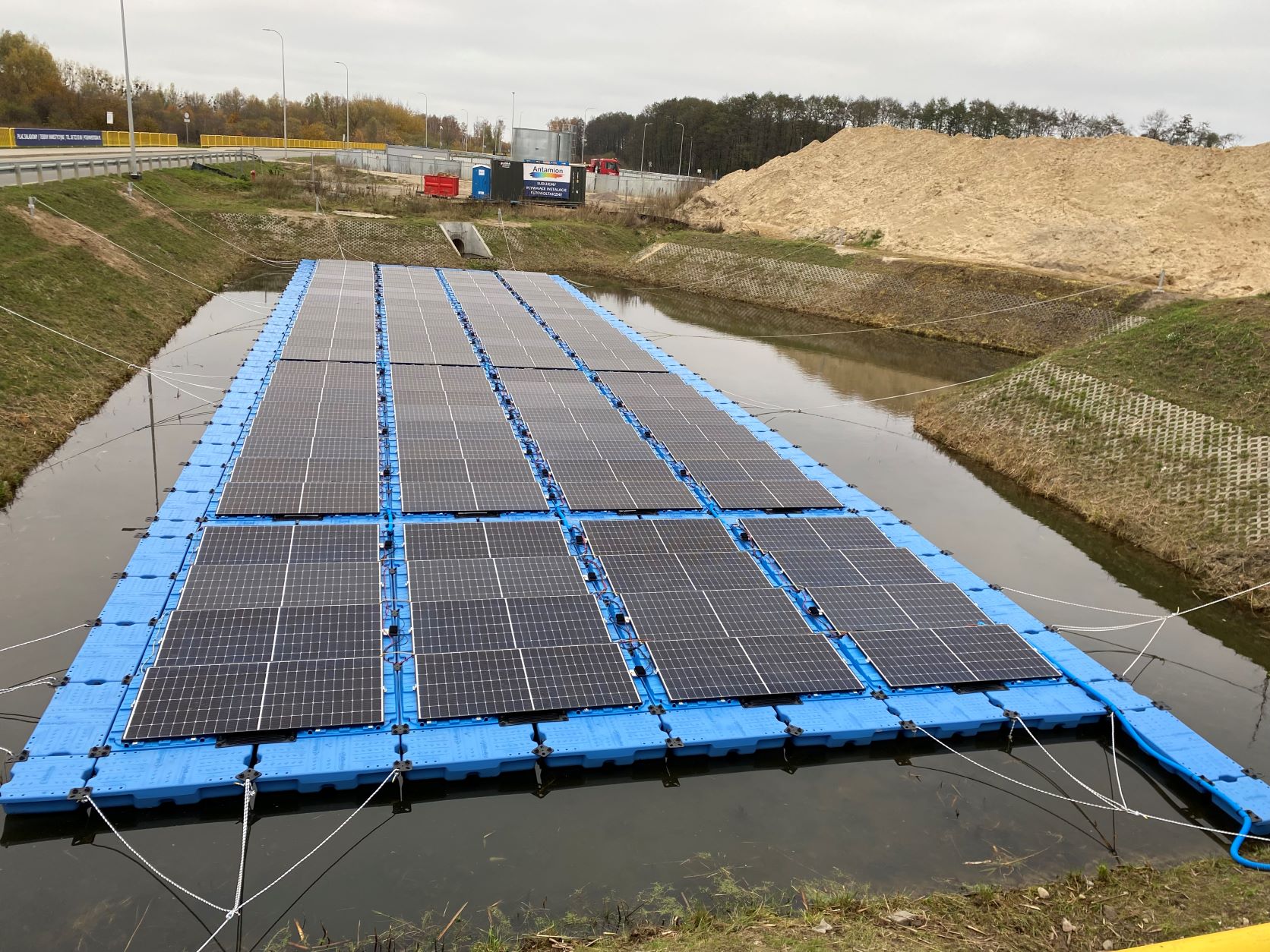The urban landscape is evolving and with it the need for innovative energy solutions
meeting the unique challenges of urban living. One such solution that is gaining popularity is floating solar installations. While floating solar farms have been explored on larger bodies of water, their potential in urban environments is only just beginning to be realised. In this article, we will explore how companies such as Antamion are pioneering the integration of floating photovoltaic technology in urban environments.
Why floating solar in the city?
Urban areas, with their dense populations and infrastructure, often face a shortage of land. This makes large-scale ground-mounted solar installations challenging. However, cities are also home to numerous water bodies, such as rainwater retention basins, irrigation reservoirs and artificial reservoirs for various purposes. These can be ideal sites for floating solar installations.
Key benefits
- Space Optimisation: The use of urban water reservoirs for solar installations addresses the challenge of land scarcity, transforming unused areas into energy-producing sites.
- Proximity of energy consumers: Urban water reservoirs are usually located near places that consume and need green electricity: street lighting, municipal buildings, urban infrastructure, etc.
- Cooling Effect: The water bodies naturally cool the solar panels, increasing their efficiency compared to their land-based counterparts.
- Evaporation Reduction: Covering part of the water surface can reduce evaporation, a significant benefit for cities struggling to save water.
Antamion urban approach
Antamion has recognised the potential of urban floating solar cells and has developed strategies tailored to the urban environment:
- Modular Design: Antamion’s floating platforms are modular, allowing for a flexible installation that can adapt to different shapes and sizes of urban water bodies.
- Integrated Systems: These installations are often integrated into smart city infrastructure, providing data to centralised systems for optimal energy management.
- Community involvement: Recognising the importance of community involvement, Antamion often involves local communities in the planning and education phases, turning these projects into urban landmarks.
Challenges and solutions
While the benefits are obvious, the urban floating solar energy also ties up a number of challenges:
- Water Quality: Municipal water bodies can sometimes become polluted. Antamion addresses this problem by ensuring that installations do not exacerbate the problem and, in some cases, even help to improve water quality.
- Aesthetics: In an urban environment, visual impact is crucial. Antamion’s designs prioritise aesthetics, ensuring that installations blend seamlessly into the urban environment.
Summary
Floating solar installations in urban environments represent a combination of innovation, sustainability and urban planning. As cities continue to grow and evolve, solutions such as these will be at the forefront of sustainable urban development. Thanks to companies like Antamion, the future of urban energy is to be not only sustainable, but also innovative and community-oriented.
We hope this article gives an insight into the exciting potential of floating solar energy in urban landscapes. With the convergence of technology and urban planning, the opportunities for sustainable urban living are growing exponentially.


